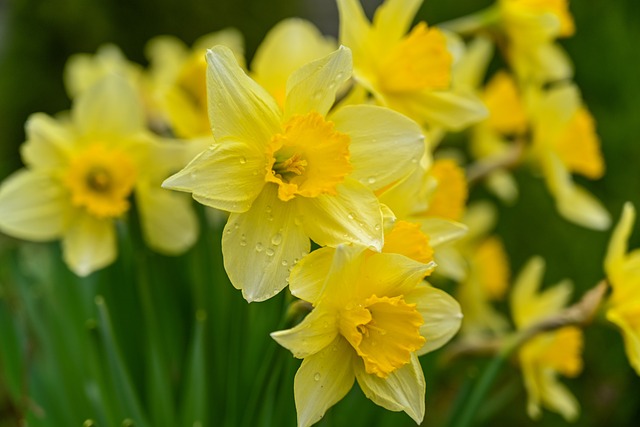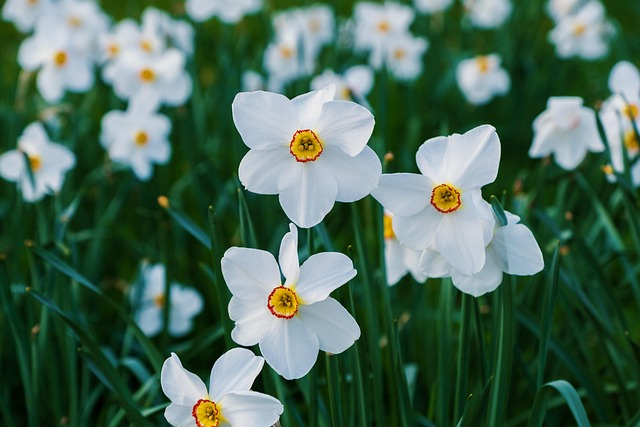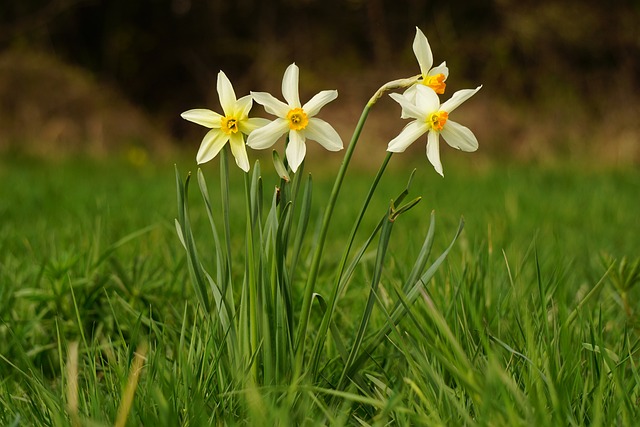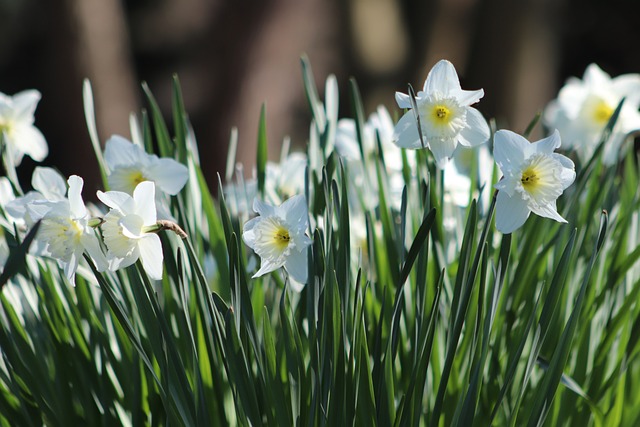Narcissus, known as “Suisen” (水仙) in Japanese, is one of the most beloved winter-blooming flowers in Japan. These charming flowers with their distinctive trumpet-shaped centers bring color and fragrance to Japanese gardens during the coldest months of the year. Despite not being native to Japan, narcissus has been cultivated here for over 1,000 years and has become deeply integrated into Japanese culture, gardening traditions, and seasonal celebrations.
This guide will walk you through everything you need to know about growing these beautiful flowers in Japan, from understanding their cultural significance to practical cultivation tips that work specifically in Japanese growing conditions. Whether you’re a beginner looking to add some winter charm to your garden or an experienced gardener wanting to perfect your narcissus cultivation skills, this comprehensive guide will help you succeed.
History and Cultural Significance of Narcissus in Japan

The story of narcissus in Japan is a fascinating journey that begins more than a millennium ago. Narcissus was not originally native to Japan but was introduced from the Mediterranean region through China before the Muromachi Period (1333-1573). The most popular variety in Japan, Narcissus tazetta var. chinensis (often called Japanese daffodil or Nihon Suisen), traveled along ancient trade routes before finding a new home in Japanese soil.
In Japan, narcissus holds special cultural significance, particularly as it blooms during the transition from winter to spring. The Japanese name “Suisen” (水仙) means “water hermit,” an apt description for a plant that blooms amidst spring rains and melting mountain snow. The yellow variety is known as “Kizuisen” (黄水仙), meaning “yellow narcissus.”
These beautiful flowers are often associated with the New Year celebrations in Japan, symbolizing renewal, good fortune, and prosperity. In traditional Japanese poetry (haiku), narcissus frequently appears as a symbol of winter’s end and the promise of spring.
The famous haiku poet Matsuo Basho (1644-94) captured the delicate beauty of narcissus in winter with his verse:
“The first snow
The leaves of the narcissus
Are just bending”
This cultural appreciation extends beyond poetry – narcissus appears in traditional Japanese art, textiles, and seasonal celebrations, representing the beauty that persists even in the coldest season.
Common Narcissus Varieties in Japan
While many narcissus varieties can grow successfully in Japan, several types have become particularly popular and well-adapted to Japanese growing conditions:
1. Nihon Suisen (Japanese Daffodil) – Narcissus tazetta var. chinensis This is the most common and beloved variety in Japan, featuring clusters of fragrant white flowers with yellow cups on each stem. It’s highly valued for its strong sweet fragrance and ability to produce multiple flowers per stem.
2. Poetic Narcissus – Narcissus poeticus Known for its pure white petals and small red-rimmed yellow cup, this variety has elegant single flowers and is appreciated for its classic beauty and sweet scent.
3. Trumpet Daffodil – Narcissus pseudonarcissus This is what many people visualize when thinking of daffodils – bright yellow flowers with a prominent trumpet-shaped corona. Various cultivars in different color combinations are available.
4. Paperwhite Narcissus – Narcissus papyraceus Popular for indoor forcing, paperwhites produce clusters of intensely fragrant pure white flowers that can brighten Japanese homes during winter.
Here’s a comparison of the main varieties grown in Japan:
| Variety | Flower Color | Fragrance | Flowering Time | Height | Special Features |
|---|---|---|---|---|---|
| Nihon Suisen | White petals with yellow cup | Strong, sweet | Dec-March | 30-40cm | Multiple flowers per stem |
| Poetic Narcissus | White with red-rimmed yellow cup | Sweet | April | 20-30cm | Elegant single flowers |
| Trumpet Daffodil | Yellow or bicolor | Mild | Feb-April | 30-45cm | Large trumpet corona |
| Paperwhite | Pure white | Very strong | Dec-Feb | 30cm | Good for indoor forcing |
Environmental Conditions for Narcissus Cultivation in Japan

Japan’s diverse climate, from the snow-covered north to the subtropical southern islands, offers various growing conditions for narcissus. Understanding these conditions is key to successful cultivation:
Climate Considerations
Narcissus generally thrives in Japan’s temperate climate, with most varieties performing best in USDA hardiness zones 4-9, which covers most of Japan. The plant’s natural cycle aligns well with Japan’s distinct seasons:
- Cool winters provide the necessary chilling period for bulbs
- Moist springs support active growth and flowering
- Warm, relatively dry summers allow for dormancy
Ideal Growing Locations in Japan
In Japan, narcissus grows particularly well in:
- Coastal areas like those in Awaji Island (Hyogo Prefecture), the Echizen Seashore (Fukui Prefecture), and Boso Peninsula (Chiba Prefecture)
- Well-drained hillsides that receive adequate winter and spring moisture
- Gardens with morning sun and afternoon shade, especially in warmer regions
Soil Requirements
The ideal soil for narcissus in Japan’s often humid conditions should be:
- Well-draining to prevent bulb rot in Japan’s rainy seasons
- Slightly acidic to neutral pH (6.0-7.0)
- Moderately fertile with good organic content
- Loamy or sandy rather than heavy clay
Tip: In areas with heavy clay soil, common in parts of Japan, adding sand and organic compost can significantly improve drainage and bulb health.
Planting and Basic Care of Narcissus
Success with narcissus in Japan begins with proper planting and consistent care tailored to local conditions.
When to Plant
The optimal planting time in Japan is early to mid-autumn (September to October). This gives bulbs enough time to establish roots before winter while ensuring they receive adequate cold exposure for proper flowering.
Planting Process
- Select healthy bulbs – Look for firm, large bulbs with no signs of damage or mold
- Prepare the soil – Loosen to a depth of 15-20cm and mix in some compost
- Plant at the right depth – Generally 2-3 times the height of the bulb (usually 10-15cm deep)
- Space properly – Allow 10-15cm between bulbs
- Water thoroughly after planting
Watering Needs
- After planting: Water well to help establish roots
- Growing season: Keep soil moderately moist but not waterlogged
- Post-flowering: Reduce watering gradually as foliage yellows
- Dormant period: Minimal water during summer dormancy
Fertilization
- At planting: Mix in some balanced, slow-release bulb fertilizer
- Early spring: Apply a light application of balanced fertilizer when shoots emerge
- After flowering: A phosphorus-rich fertilizer helps bulb development for next season
- Avoid high-nitrogen fertilizers which promote foliage at the expense of flowers
Post-Flowering Care
This is crucial for next year’s blooms:
- Leave foliage intact until it naturally yellows and dies back (usually 6 weeks after flowering)
- Remove spent flower heads to prevent seed formation and focus energy on bulb development
- Don’t braid or tie up leaves as this reduces photosynthesis and weakens the bulbs
Propagation Methods for Narcissus

Expanding your narcissus collection in Japan can be done through several methods:
Division of Bulb Clumps
The most common method in Japan is division of established clumps:
- Wait until foliage has died back completely (usually early summer)
- Dig up the entire clump carefully with a garden fork
- Gently separate the bulbs by hand, keeping the roots intact where possible
- Replant larger bulbs immediately at the proper depth
- Grow smaller bulblets in a nursery bed until they reach flowering size
Best time for division in Japan: June to August, during the dormant period
Growing from Seeds
While possible, this method takes 5-7 years to produce flowering plants and is generally practiced only by enthusiasts:
- Collect seeds when seed pods turn brown and begin to split
- Sow immediately in pots or prepared beds
- Provide cold stratification by keeping outdoors during winter
- Maintain moisture during germination and early growth
Bulbil Propagation
Some varieties produce small bulbils at leaf bases:
- Collect bulbils when they form
- Plant in nursery beds or pots about 5cm deep
- Grow for 2-3 years until reaching flowering size
Pest and Disease Management for Narcissus
While narcissus is relatively resistant to pests and diseases, Japan’s humid climate can present some challenges:
Common Pests
Narcissus Bulb Fly: The larvae burrow into bulbs, causing rot and failure to flower.
- Prevention: Cover plantings with fine mesh during the flying season (late spring)
- Treatment: Remove and destroy affected bulbs
Aphids: Can spread viruses between plants.
- Prevention: Maintain good air circulation
- Treatment: Spray with insecticidal soap or neem oil solution
Common Diseases
Basal Rot (Fusarium): A fungal disease common in Japan’s humid conditions.
- Prevention: Ensure excellent drainage; avoid planting in previously affected areas
- Treatment: Remove and destroy infected bulbs; treat remaining bulbs with fungicide
Narcissus Yellow Stripe Virus: Causes yellow streaking in leaves and reduced flowering.
- Prevention: Control aphids which spread the virus; purchase virus-free bulbs
- Treatment: No cure; remove and destroy infected plants
Cultural Practices for Disease Prevention
These are particularly important in Japan’s often humid climate:
- Good air circulation – Proper spacing between plants
- Proper watering – Water at the base rather than overhead
- Sanitation – Remove dead foliage promptly
- Crop rotation – Don’t plant narcissus in the same location for consecutive years
Conclusion
Growing narcissus in Japan offers a wonderful way to connect with both the natural seasons and the rich cultural heritage of this beautiful country. From the historical significance of narcissus in Japanese art and literature to the practical aspects of cultivation in Japan’s unique climate, these beloved flowers reward gardeners with their cheerful blooms during the winter months.
By understanding the specific needs of narcissus in Japan’s growing conditions and following the cultivation practices outlined in this guide, you can enjoy success with these classic bulbs. Whether planted in garden beds, naturalized in lawns, or forced indoors for winter color, narcissus offers versatility and charm that few other plants can match.
Remember that patience is key with bulb plants like narcissus. The care you provide after flowering is just as important as pre-bloom maintenance, as it sets the stage for next year’s display. With proper attention to the plant’s full life cycle, your narcissus will return year after year, creating a lasting garden tradition that connects you to Japan’s horticultural heritage.
Happy gardening, and enjoy the beauty of narcissus in your Japanese garden!


